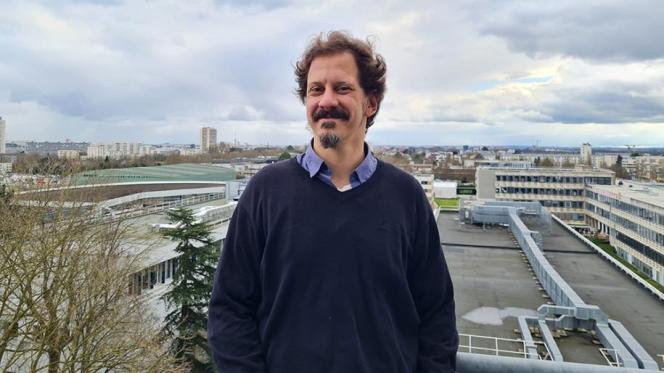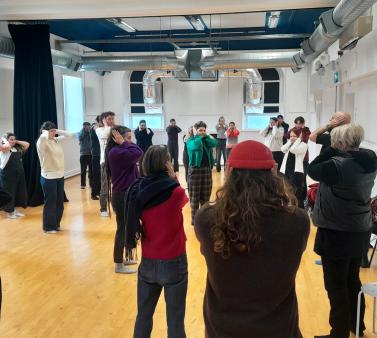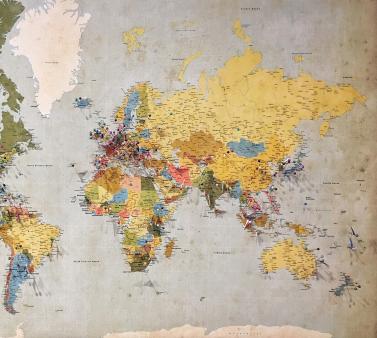
Diego F. Guerra's doctoral thesis focused on post-mortem photography in Argentina in the 19th and 20th centuries. He is currently working on issues relating to photography, art and the cultural industries, as well as the study and promotion of photographic archives.
What is your program at Rennes 2? What are your interventions about?
Diego F. Guerra. Part of my work here at Rennes 2 is related to my thesis on post-mortem photography in Argentina in the 19th and 20th centuries. I'm giving two lectures on one aspect of my thesis topic, that is, the participation of French artists in post-mortem painting and photography in Argentina, in Buenos Aires during the second half of the 19th century. I'm also planning a lecture on the link between literature and photography in Argentina, in relation to the work of Nestor Ponce. I intend to analyze the discourse on photography and the imaginary that is present around photography as a means of representation, the problem of photographic objectivity, the link between photography and reality and the debates on the naturalist novel in 19th-century France and Argentina. I will also discuss the contribution of avant-garde photography in Buenos Aires in the 1920s and 1930s to the emergence of avant-garde literature and poetry, such as that of Borges. I'll also be giving an introductory course in image analysis, and discussing some theoretical and methodological issues with undergraduate Spanish students. I'll be devoting part of my time to bibliographical research at the BU centrale (Central Library) and the Archives de la critique d'art, and perhaps even in Paris, at the National Library of France, the BNF. Finally, at the invitation of the Université de Bretagne Occidentale (UBO), I'll be holding some lectures in Brest and Quimper on these topics.
What can you tell us about your thesis subject on post-mortem photography? Was this a widespread practice?
Diego F. Guerra. This practice was common in the 19th century. Post-mortem photography is a kind of portraits that developed from the beginning of photography in France, the United States, England and everywhere. This was part of the general production of photographic portraits in the 1840s. It was simply a matter of photographing the dead, on their deathbed, in their coffin, or in other places, by staging. The most famous case in Argentina is that of a former president, Domingo Faustino Sarmiento, who was photographed after his death: his body was embalmed, dressed and installed in an armchair, next to his office. The objective of post-mortem portraits is not very different from other portraits: it is essentially a question of showing the individual physiognomy and social belonging of the model.
What is your research about today?
Diego F. Guerra. It was both difficult and a relief to put an end to my research on post-mortem photography. Today, I'm interested in photography in Argentina during the 20th century and its insertion into the mass culture industry. In this context, I'm studying the emergence of a relatively autonomous photographic field - in the Bourdieusian sense of the term - both professionally and artistically, i.e. the emergence of debates on the professional autonomy of commercial, advertising and fashion photographers; their participation in initiatives to legitimize the aesthetics of independent artistic groups; and the production of periodicals specializing in photography.
What motivated you to apply for the Chair of the Americas?
Diego F. Guerra. I had fond memories of my time as a doctoral student here at Rennes 2, and I wanted to come back to report on the completion of my doctorate and to exchange ideas with colleagues in my position as a qualified researcher. I've known Nestor Ponce for 15 years. He helped me to apply for the chair and assisted me with all the administrative formalities on arrival, as well as introducing me to colleagues at Rennes 2 and other Breton universities to organize my talks. I feel at home here!
How will you continue your collaboration with the Center for the Study of Ancient and Modern Languages and Literatures (CELLAM)?
Diego F. Guerra. The University of Tres de Febrero for which I work has an agreement with Rennes 2 and I will develop contacts with researchers here. My research center, the Center for Research in Art, Matter and Culture, is a specialist in the material dimension of works of art. I am the director of the program on photography and I intend to develop joint exchanges and projects with CELLAM, on the research axis "Confluences: literature and arts".




